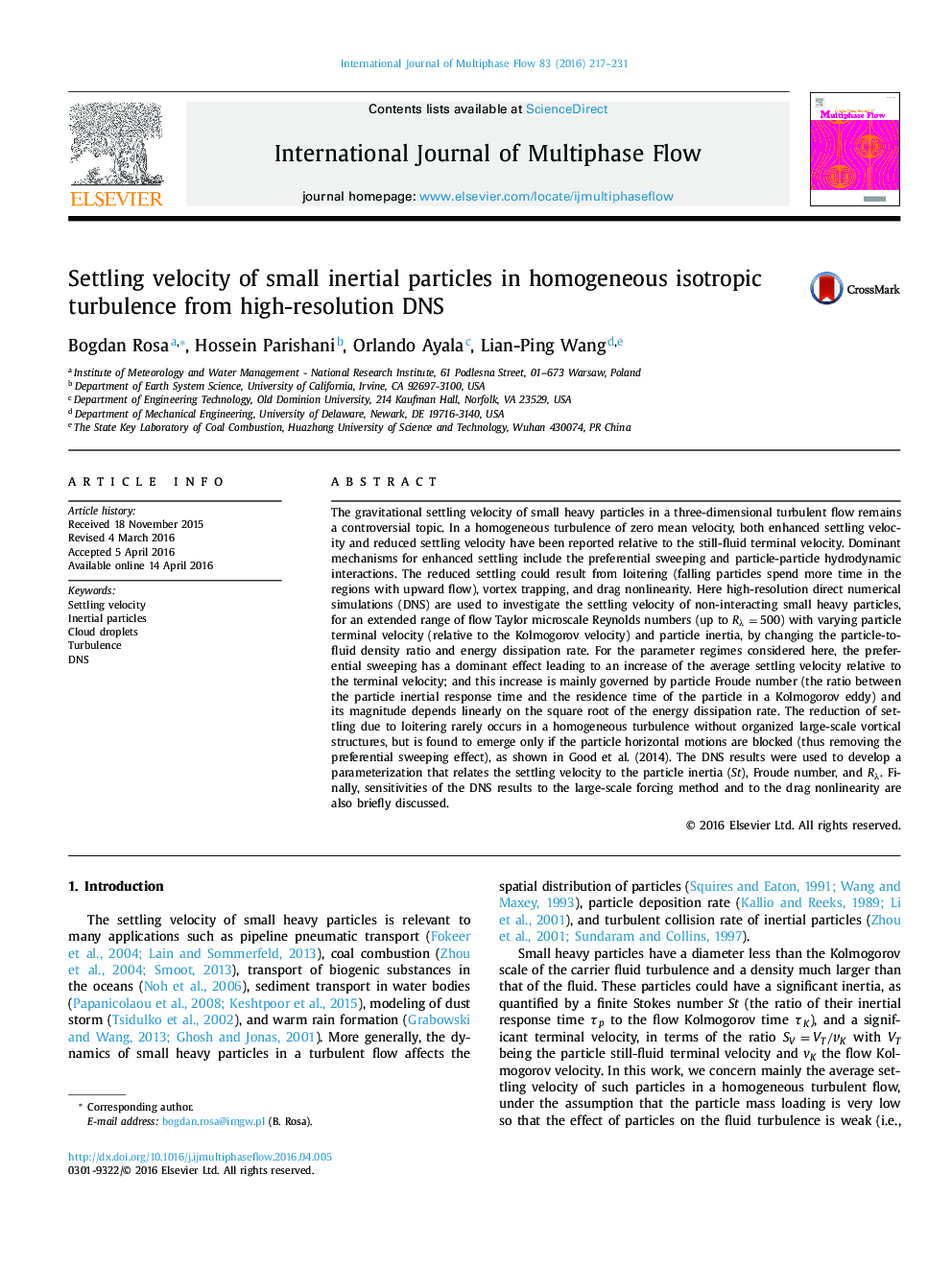| کد مقاله | کد نشریه | سال انتشار | مقاله انگلیسی | نسخه تمام متن |
|---|---|---|---|---|
| 7060297 | 1458495 | 2016 | 15 صفحه PDF | دانلود رایگان |
عنوان انگلیسی مقاله ISI
Settling velocity of small inertial particles in homogeneous isotropic turbulence from high-resolution DNS
دانلود مقاله + سفارش ترجمه
دانلود مقاله ISI انگلیسی
رایگان برای ایرانیان
کلمات کلیدی
موضوعات مرتبط
مهندسی و علوم پایه
مهندسی شیمی
جریان سیال و فرایندهای انتقال
پیش نمایش صفحه اول مقاله

چکیده انگلیسی
The gravitational settling velocity of small heavy particles in a three-dimensional turbulent flow remains a controversial topic. In a homogeneous turbulence of zero mean velocity, both enhanced settling velocity and reduced settling velocity have been reported relative to the still-fluid terminal velocity. Dominant mechanisms for enhanced settling include the preferential sweeping and particle-particle hydrodynamic interactions. The reduced settling could result from loitering (falling particles spend more time in the regions with upward flow), vortex trapping, and drag nonlinearity. Here high-resolution direct numerical simulations (DNS) are used to investigate the settling velocity of non-interacting small heavy particles, for an extended range of flow Taylor microscale Reynolds numbers (up to Rλ=500) with varying particle terminal velocity (relative to the Kolmogorov velocity) and particle inertia, by changing the particle-to-fluid density ratio and energy dissipation rate. For the parameter regimes considered here, the preferential sweeping has a dominant effect leading to an increase of the average settling velocity relative to the terminal velocity; and this increase is mainly governed by particle Froude number (the ratio between the particle inertial response time and the residence time of the particle in a Kolmogorov eddy) and its magnitude depends linearly on the square root of the energy dissipation rate. The reduction of settling due to loitering rarely occurs in a homogeneous turbulence without organized large-scale vortical structures, but is found to emerge only if the particle horizontal motions are blocked (thus removing the preferential sweeping effect), as shown in Good et al. (2014). The DNS results were used to develop a parameterization that relates the settling velocity to the particle inertia (St), Froude number, and Rλ. Finally, sensitivities of the DNS results to the large-scale forcing method and to the drag nonlinearity are also briefly discussed.
ناشر
Database: Elsevier - ScienceDirect (ساینس دایرکت)
Journal: International Journal of Multiphase Flow - Volume 83, July 2016, Pages 217-231
Journal: International Journal of Multiphase Flow - Volume 83, July 2016, Pages 217-231
نویسندگان
Bogdan Rosa, Hossein Parishani, Orlando Ayala, Lian-Ping Wang,